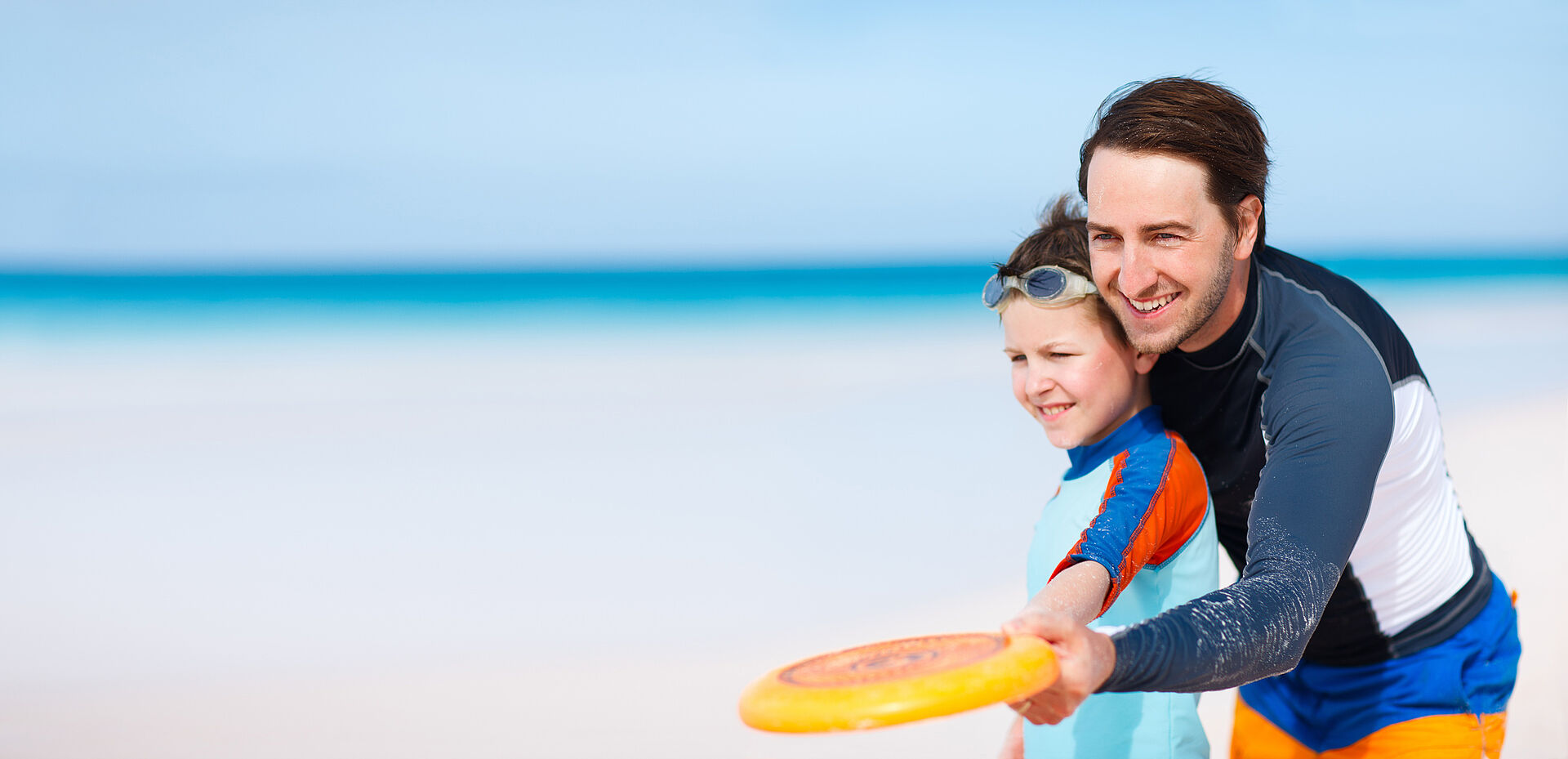Sensitive skin of children, older persons and ill persons
Children's skin is very thin and thus extremely sensitive. The skin and immune system of the child can suffer irreparable damage, even if only slightly red.
Parents should therefore always take heed: sunburns in childhood increase the risk of later skin cancer many times over. Children also spend significantly more time outdoors playing games and sports than adults. For this reason, it is very important to consistently protect oneself from too much solar radiation, even at a young age. In particular, when playing in water, children and young people are more intensively exposed to increased UV radiation.
For this reason, experts recommend that children are protected from harmful ultraviolet rays as much as possible. This definitely also includes wearing the correct UV protective clothing. Suitable UV protection is also essential for older persons as the skin is less able to successfully regenerate itself with age. Persons with illnesses must be aware that their skin can have a more sensitive reaction to solar radiation.
During extended periods outside, playing sports and leisure activities

During extended periods and/or repeated periods outside, sun prevention is generally required. Adults should thus also consider effective UV protection using textiles with an appropriate UPF when enjoying outdoor activities such as walking, playing tennis, cycling and jogging.
The risks are particularly high in the mountains. Light sand also reflects the radiation by up to 25 percent. And you are not safe even under water: even just half a metre below the surface of the water, the UV radiation is only reduced by 60 percent.
Working outdoors

An estimated two and a half million people in Germany spend their entire working day outside. Their risk of skin cancer is strikingly higher than that of employees who work in closed rooms. According to Deutsche Krebshilfe [German Cancer Aid], around 260,000 people each year suffer from non-melanoma skin cancer.
This group of persons subject to this explicit risk does not just include persons working outdoors, for example, pool attendants, builders and gardeners, but also includes occupational groups with varying fields of activity both outside and inside, for example, sports teachers, nursery teachers, waiters or the police. Appropriate workwear should thus be part of basic equipment.
